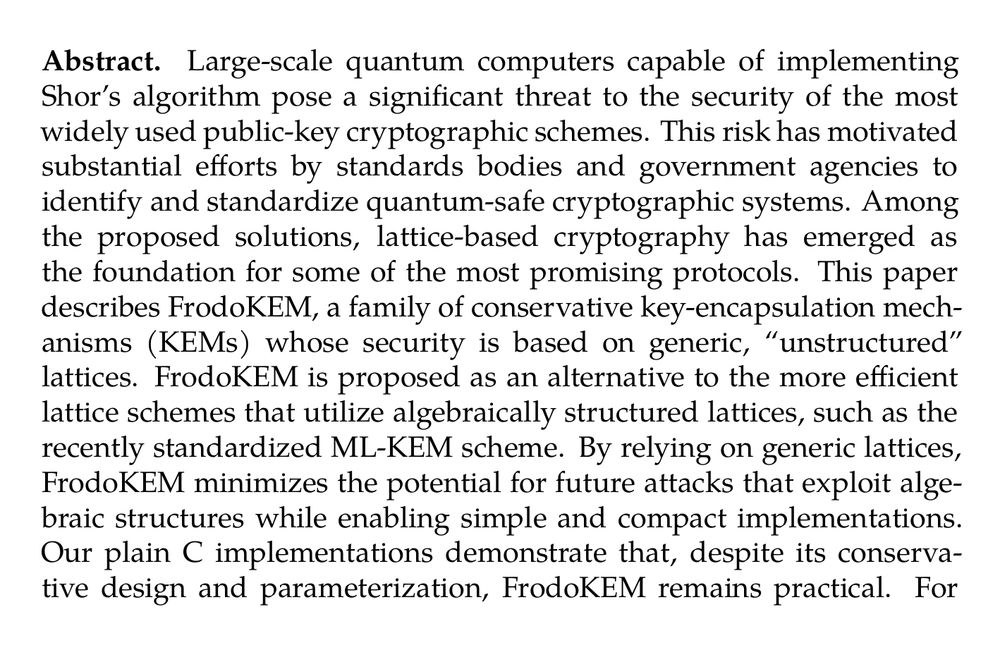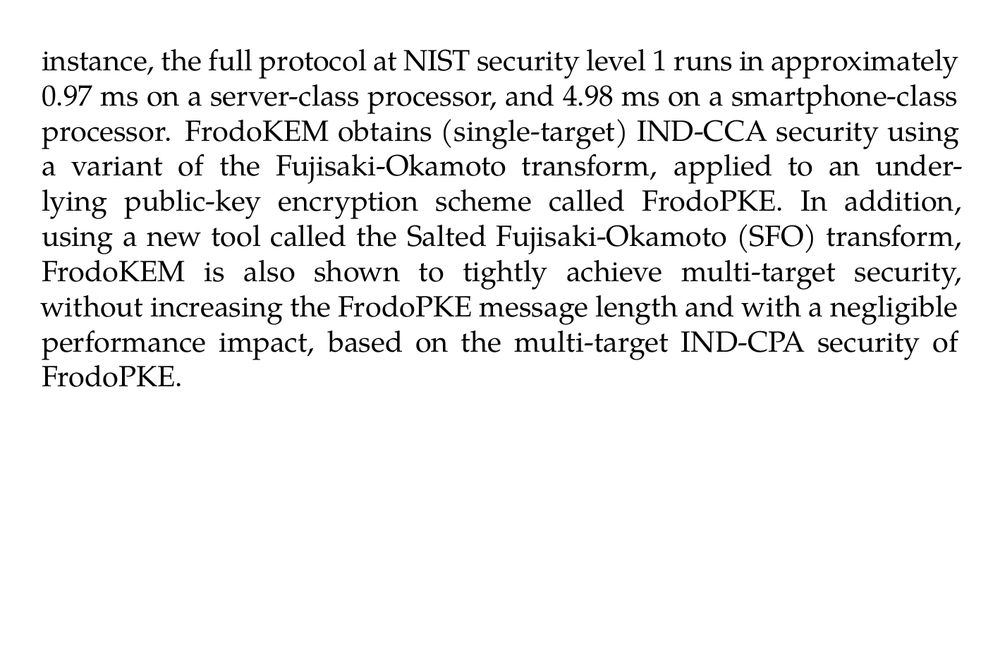
Profoundly, profoundly anti-American shit.

Profoundly, profoundly anti-American shit.
www.oregonlive.com/portland/202...

www.oregonlive.com/portland/202...
(on security vulnerabilities arising from incorrect implementation of floating-point arithmetic in FIPS-206)
(on security vulnerabilities arising from incorrect implementation of floating-point arithmetic in FIPS-206)
I'll go through some of the most egregious ones here.
![II. Credibility
The Court next addresses the credibility of the parties’ evidence and witnesses. After reviewing all the evidence submitted to the Court and listening to the testimony elicited at the preliminary injunction hearing, during depositions, and in other court proceedings, the Court finds Defendants’ evidence simply not credible. [FN 6]
Plaintiffs submitted a mountain of evidence, providing the Court with over eighty declarations, numerous videos and articles, and other evidence. Defendants did not rebut anything that Plaintiffs set forth in their declarations or testimony, even with BWC footage.
[FN 6] In another case considering some of the same evidence presented to this Court, another court in this district also found that the perceptions of certain of Defendants’ declarants, such as Hott and Parra, were not reliable. See Illinois v. Trump, No. 25-cv-12174, 2025 WL 2886645, at *5 (N.D. Ill. Oct. 10, 2025) (noting a “troubling trend of Defendants’ declarants equating protests with riots and a lack of appreciation for the wide spectrum that exists between citizens who are observing, questioning, and criticizing their government, and those who are obstructing, assaulting, or doing violence”), motion to stay denied in part, 155 F.4th 929 (7th Cir. 2025).](https://cdn.bsky.app/img/feed_thumbnail/plain/did:plc:2vtbmhmrwzbqcfv4we4uxzzt/bafkreifpyry2il5toxbr3iejgrsxs6kmnwve75qwnhebfp44ieyjrfpsdu@jpeg)
I'll go through some of the most egregious ones here.






We give an efficient 𝒕𝒉𝒓𝒆𝒔𝒉𝒐𝒍𝒅 𝒅𝒆𝒄𝒓𝒚𝒑𝒕𝒊𝒐𝒏 protocol for FHE/LWE with: no "noise flooding" or parameter loss, simulation (UC) security, and high throughput.
web.eecs.umich.edu/~cpeikert/pu...


We give an efficient 𝒕𝒉𝒓𝒆𝒔𝒉𝒐𝒍𝒅 𝒅𝒆𝒄𝒓𝒚𝒑𝒕𝒊𝒐𝒏 protocol for FHE/LWE with: no "noise flooding" or parameter loss, simulation (UC) security, and high throughput.
web.eecs.umich.edu/~cpeikert/pu...
We give a list-decoding algorithm for Reed-Solomon codes, where the error is measured in the Euclidean (ℓ₂) or Lee (ℓ₁) metrics, rather than the Hamming metric (as is more typical).
web.eecs.umich.edu/~cpeikert/pu...

We give a list-decoding algorithm for Reed-Solomon codes, where the error is measured in the Euclidean (ℓ₂) or Lee (ℓ₁) metrics, rather than the Hamming metric (as is more typical).
web.eecs.umich.edu/~cpeikert/pu...




The raids are done without search warrants or other procedures designed to protect civil liberties.

The raids are done without search warrants or other procedures designed to protect civil liberties.



They’re finishing their papers and taking off for the Weekend at 2pm Friday, while we Americans have to pull ALL-NIGHTERS!
Not on my (your favorite PC chair) watch—MAGTBAARHA!
They’re finishing their papers and taking off for the Weekend at 2pm Friday, while we Americans have to pull ALL-NIGHTERS!
Not on my (your favorite PC chair) watch—MAGTBAARHA!



